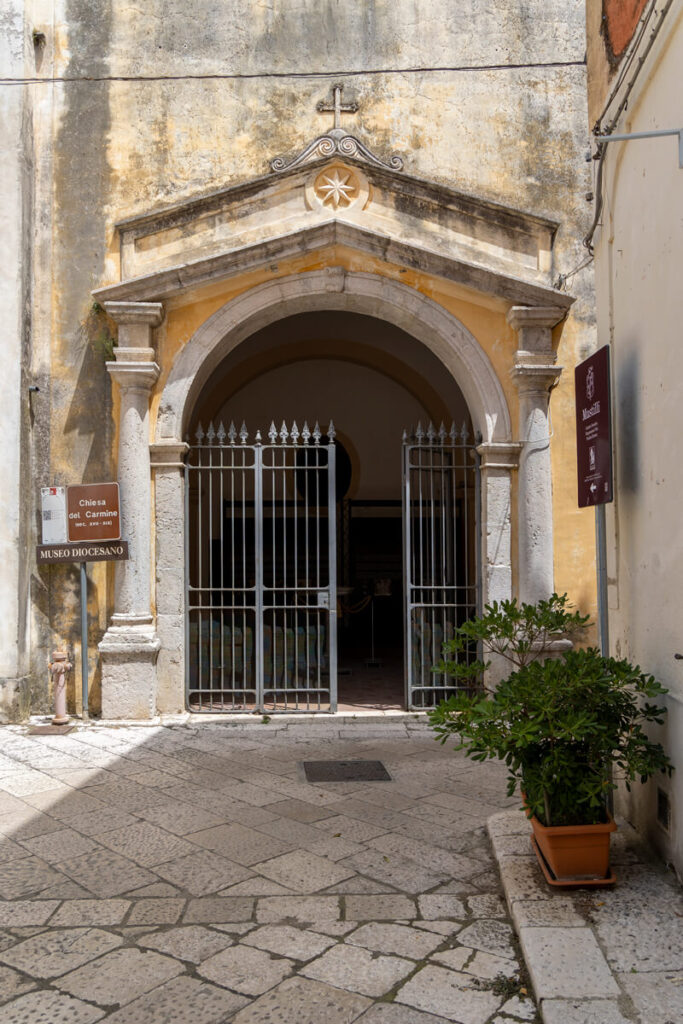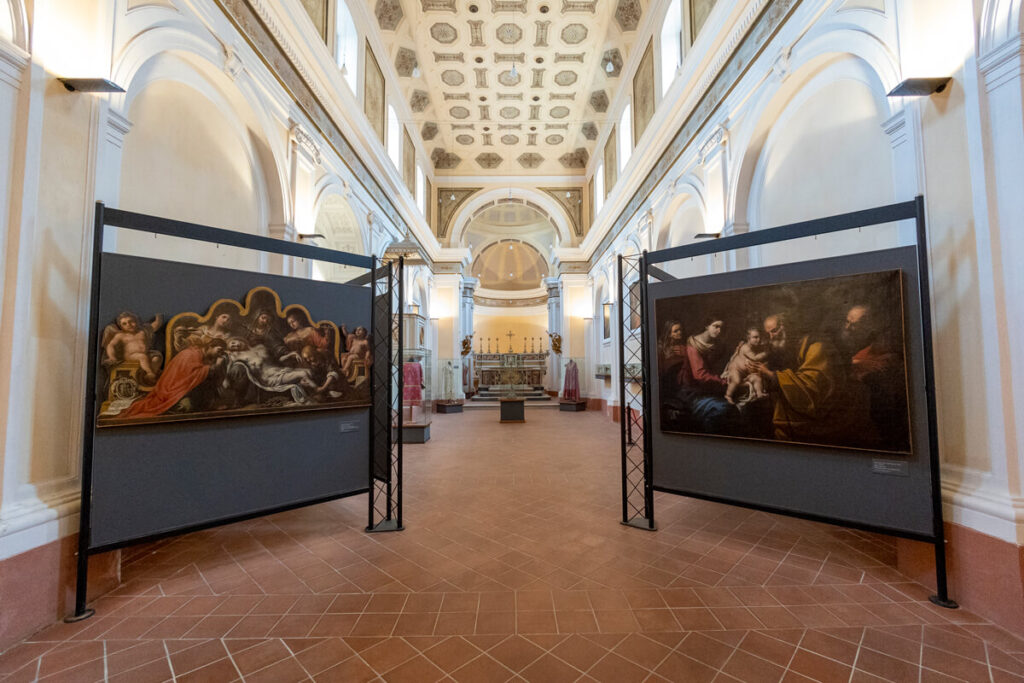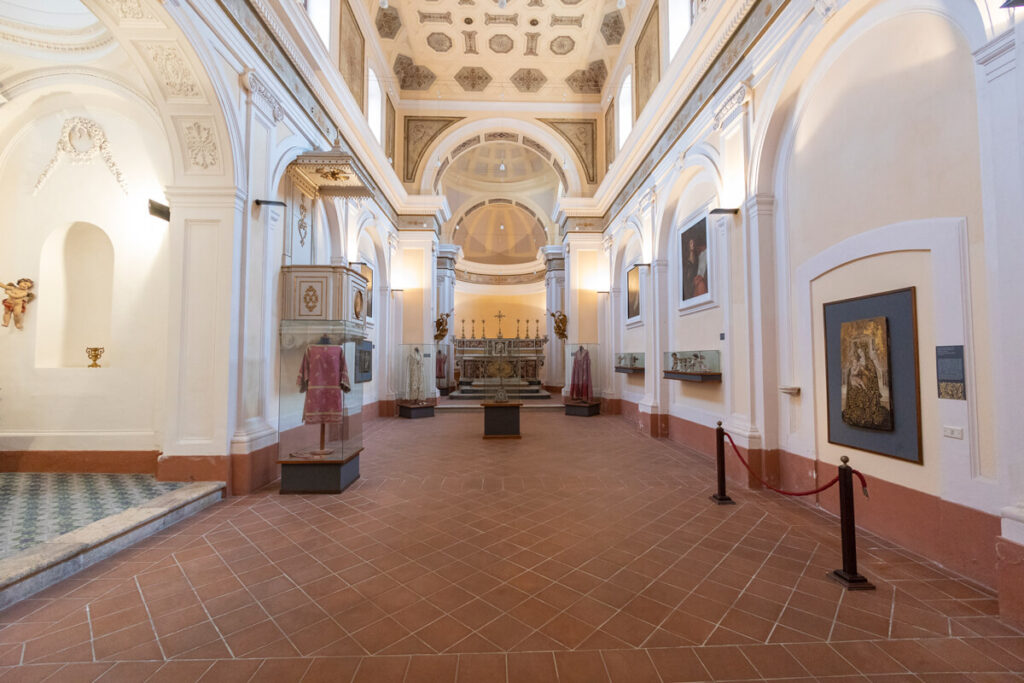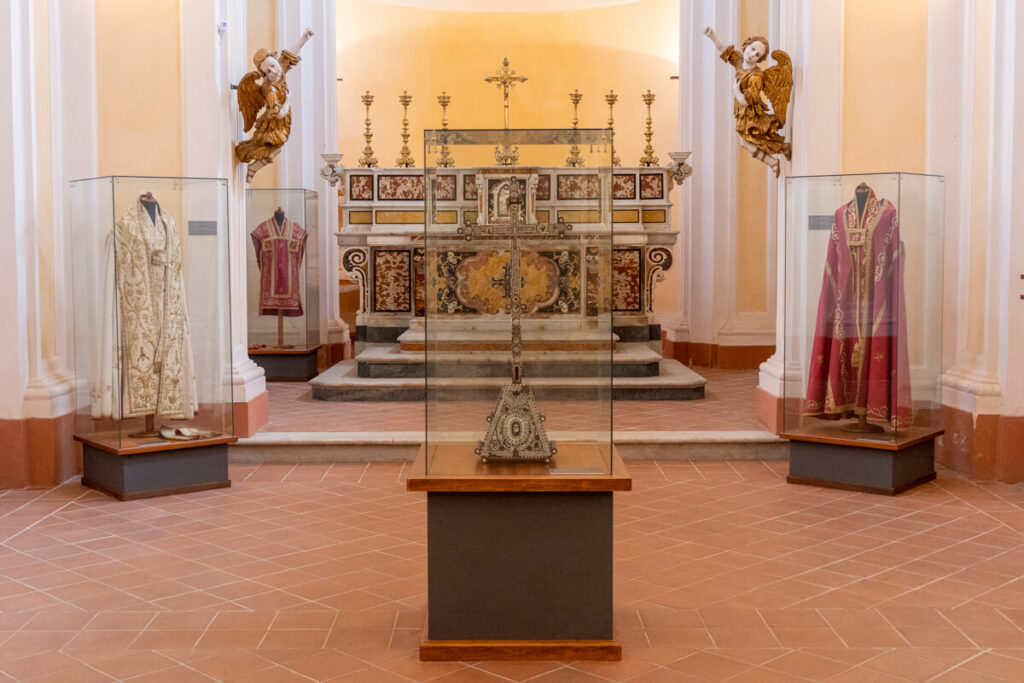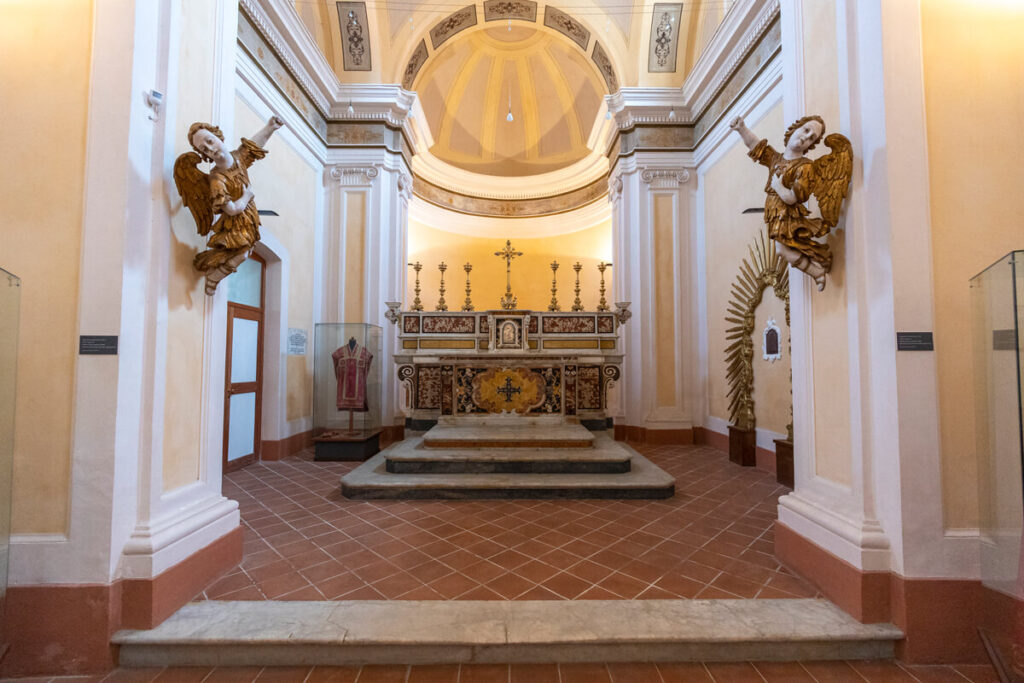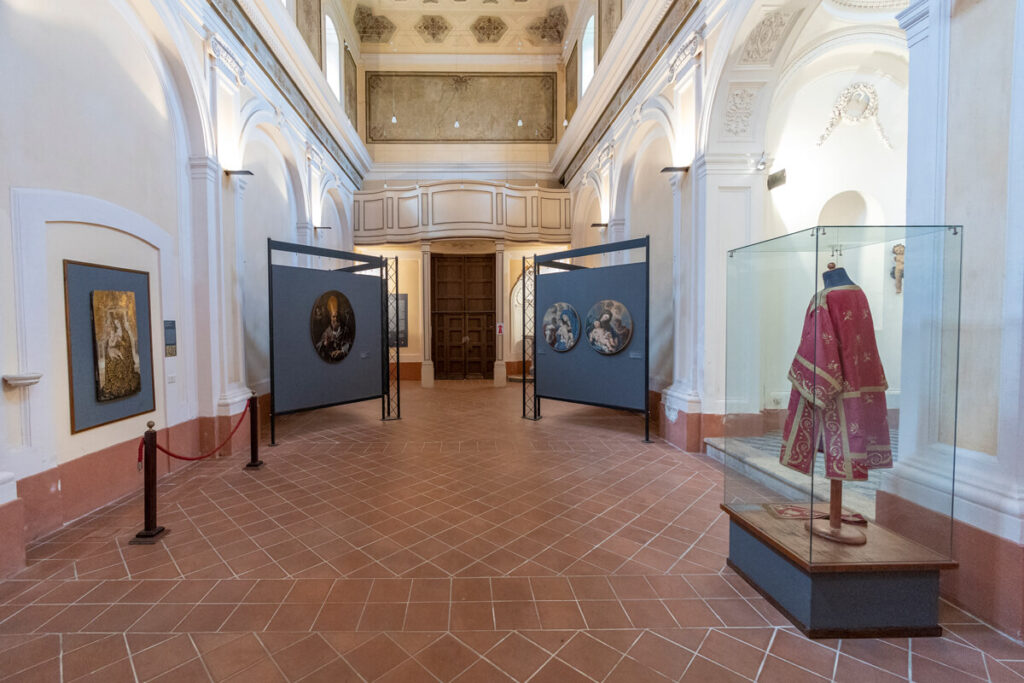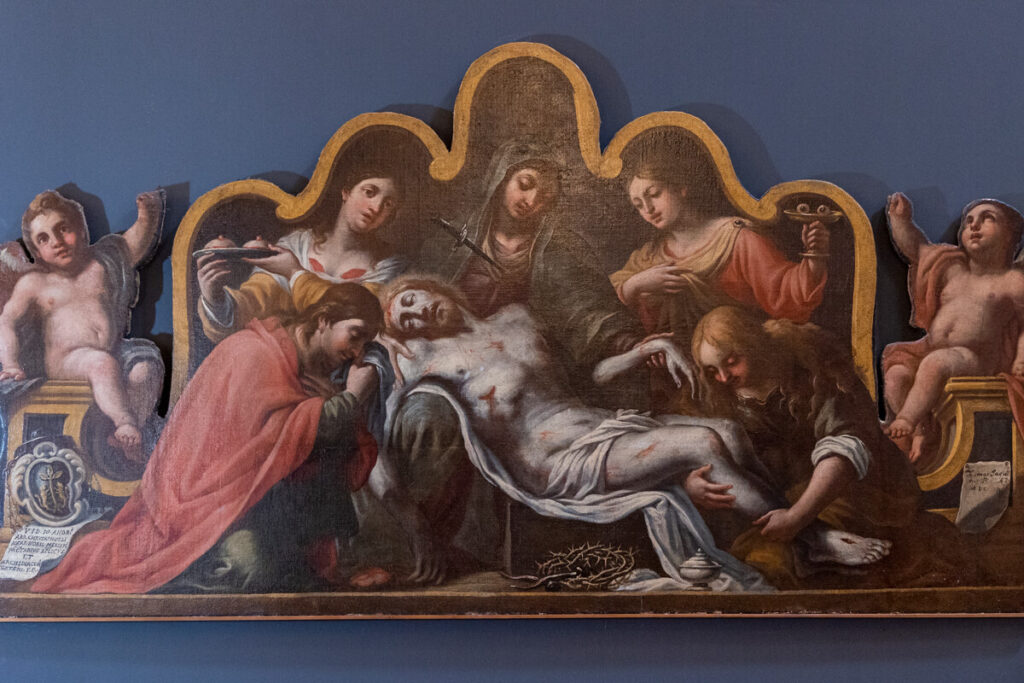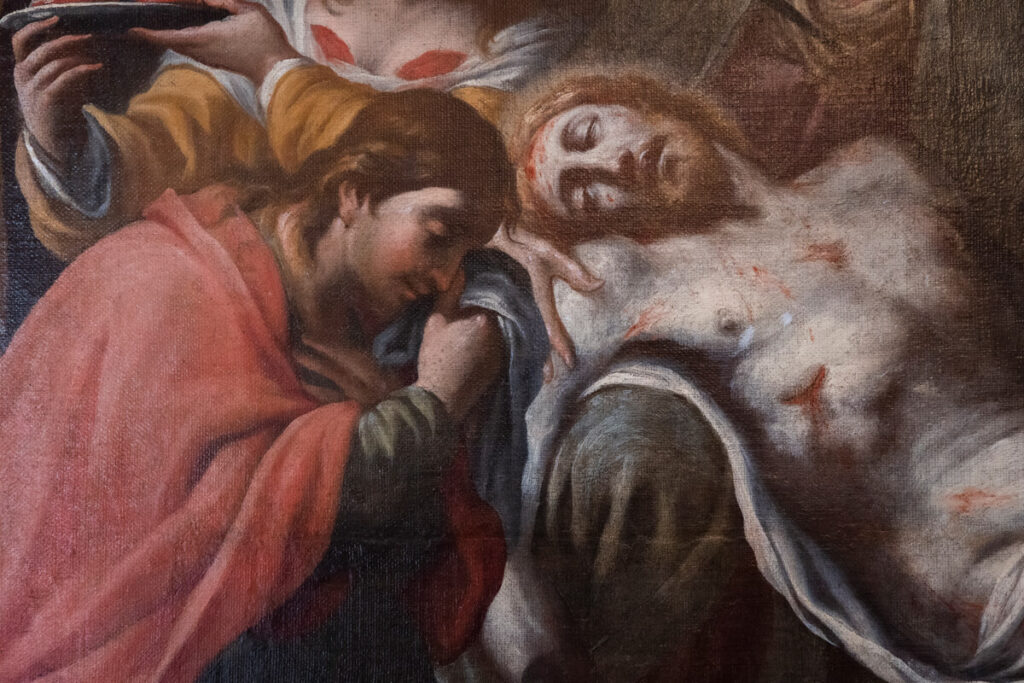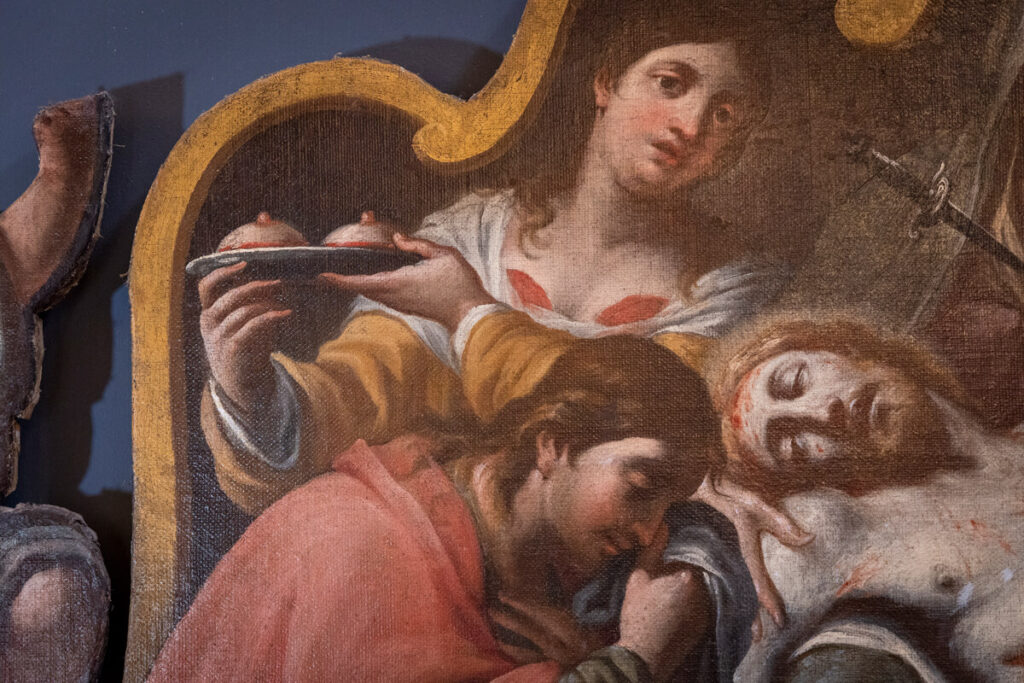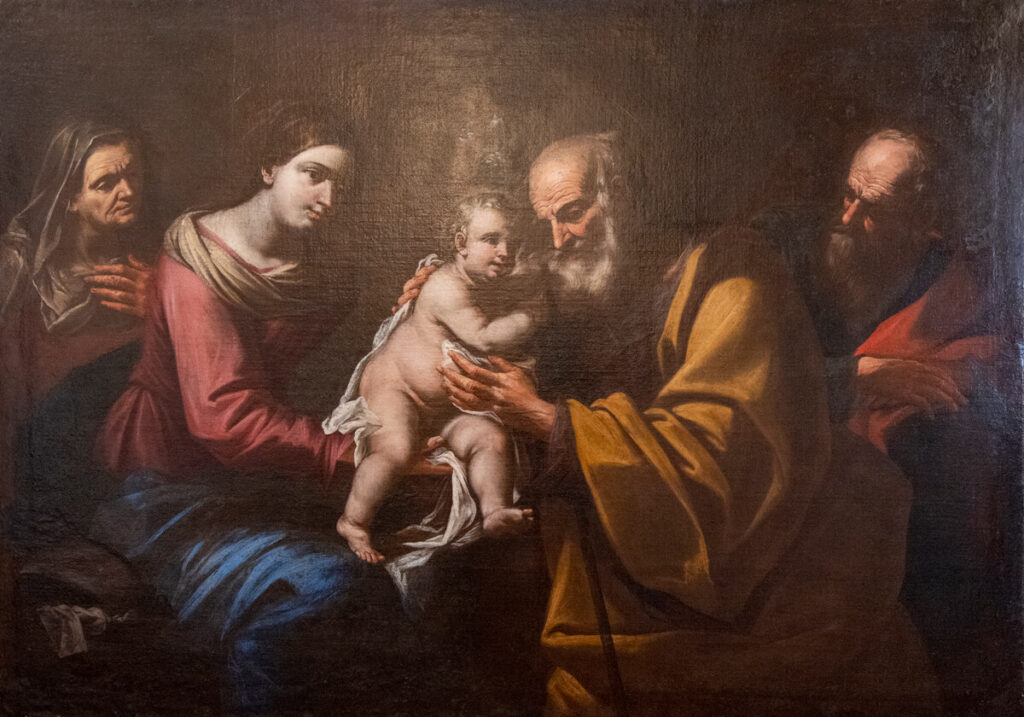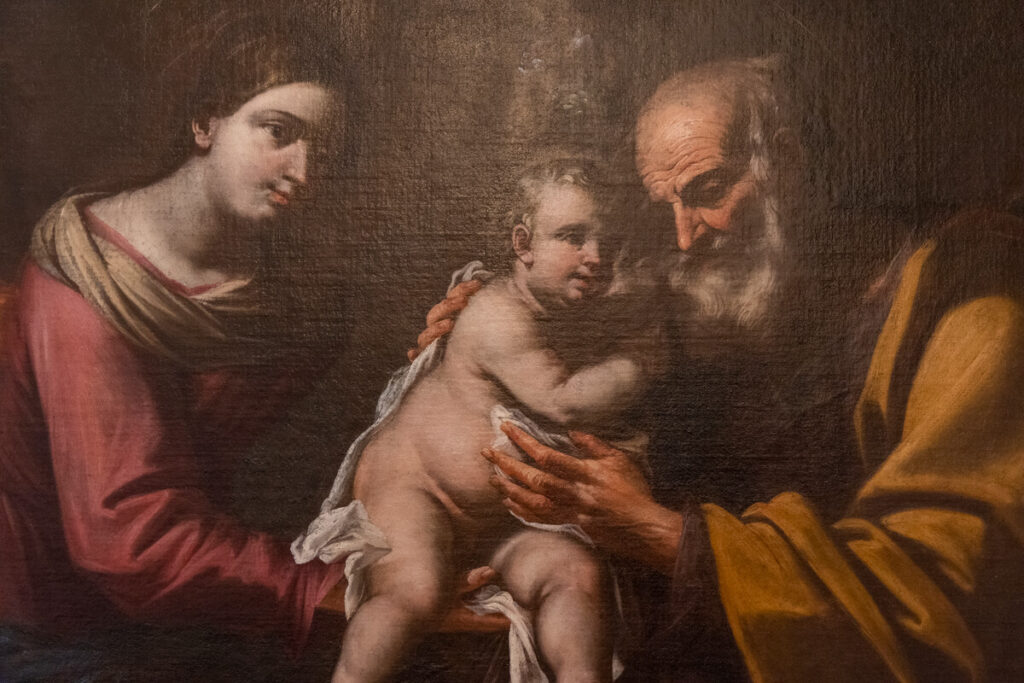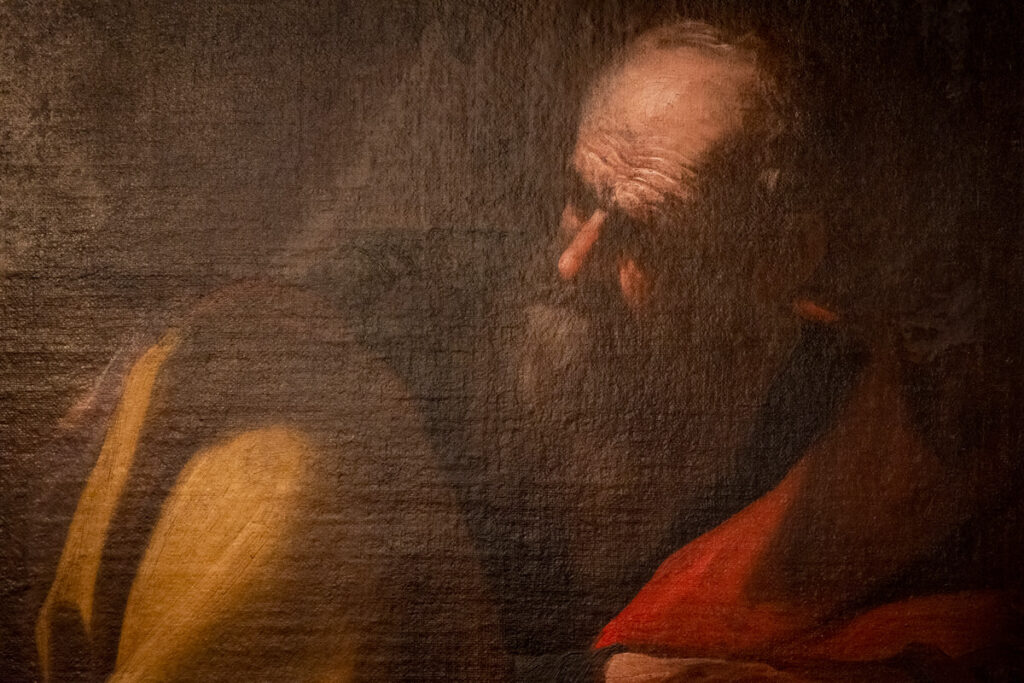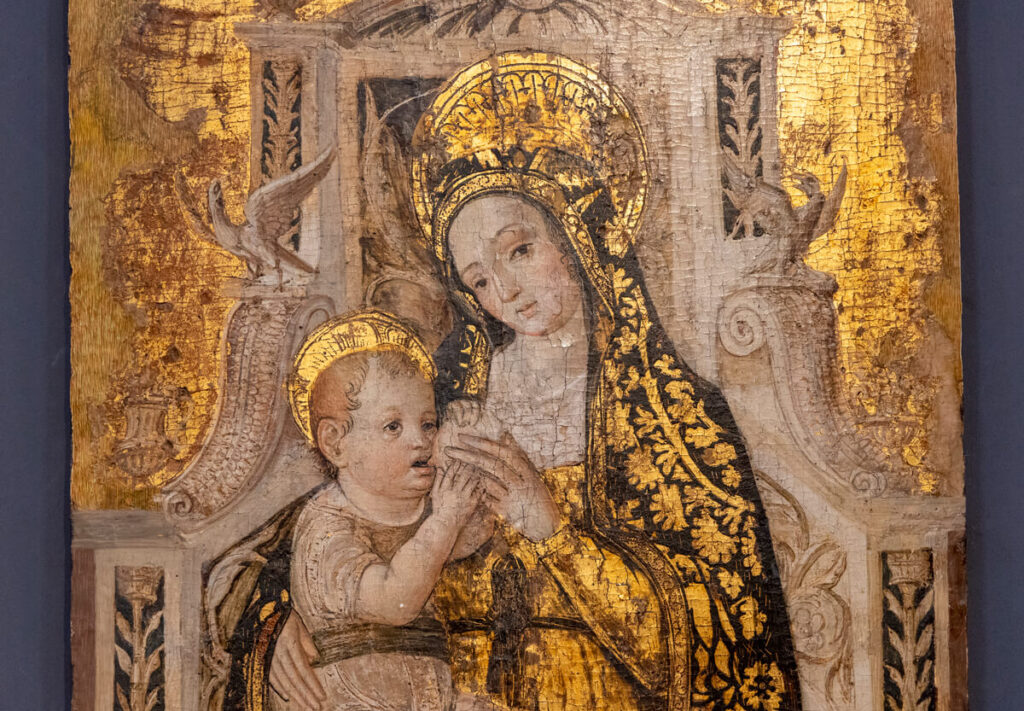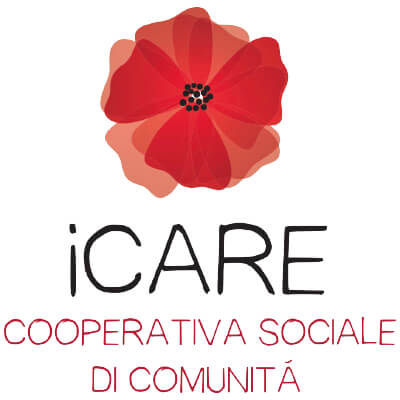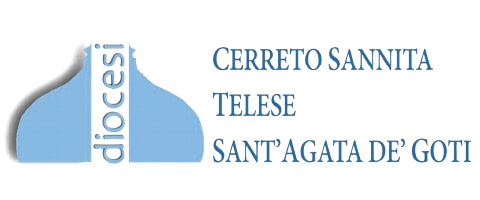The Carmelite Church in the square of the same name is at a focal point in the historical centre, halfway between the Ducal Castle and the Cathedral. It was built in 1613 on the site of the Church of Santa Maria della Misericordia, which was first mentioned in 1525.
The 17th-century church had a single hall with only a high altar, on which was a canvas dedicated to Our Lady of Mount Carmel painted by Giovan Bernardo Azzolino, now lost. The side chapel and sacristy were added in 1619. In 1621, the completed church was dedicated to Santa Maria del Carmine, also giving its name to the small square in front of it. In 1641, the marble basin with brass key was placed in the sacristy. In 1717, the new high altar was erected, the work of Pietro Ghetti from Carrara, consecrated by Bishop Filippo Albini in 1718. Over the centuries, the church has undergone numerous alterations, also due to earthquakes that damaged it, until the recent works to adapt it as a Diocesan Museum, which have preserved its geometric simplicity.
The interior of the Diocesan Museum still has a single nave without a facade, accessed through a porticoed atrium. From 1961 the church was no longer used for worship; in 1996 Cardinal Joseph Ratzinger, later Pope Benedict XVI on a visit to Sant’Agata de Goti, inaugurated the Museum.
The works collected inside come mainly from the local churches damaged by the 1980 earthquake and range from the 15th to the 18th century; the oldest is the 15th-century panel of the Madonna of the Milk (or of the Graces), by an unknown author, a gift from the Friars Minor of Arpaia.
From the entrance starts the vast production of Tommaso Giaquinto (1662-1717): a Deposition, in which to the right and left of the Virgin, the painter placed the martyr saints of local devotion, Saint Agatha and Saint Lucy. On the walls are portraits of Saints John the Evangelist, Judas Thaddeus and Peter.
In the centre of the nave, the 17th century Reliquary Cross from the Holy Land is very noteworthy. It consists of a truncated pyramid on which the Latin cross is grafted, made of walnut wood with mother-of-pearl, ivory and resin inlays. On the front is the coat-of-arms of the Franciscans of Palestine: two arms crossing, one of Jesus and the other of St. Francis. On the back, the symbols of the crucifixion are inlaid in mother-of-pearl. The reliquary was in the Church of St. Francis and was exposed to the veneration of the faithful every Good Friday. Crowning the nave are the 16th-century angels in gilded polychrome wood on either side of the altar, dressed in tunic and military shoes, because they are members of the heavenly army.
In the showcases one can admire silk sacred vestments in various liturgical colours, dating back to the 19th century, with the coats of arms of the bishops who donated them to the Cathedral. In the side chapel is an 18th-century statue of the Immaculate Conception, in polychrome wood, crushing the moon and the snake.

Works present
Madonna of Milk (or of the Graces), second half 15th century
Oil on panel
Provenance: Friars Minor of Arpaia
(This is the oldest work in the Museum)
Sant’Anna con la Sacra Famiglia, first half 17th century
Oil on canvas
Dimensions: 130×182 cm
Provenance: Cathedral of Sant’Agata de’ Goti
The Expulsion of Hagar and Ishmael, 1670-1680
Oil on canvas
Dimensions: 50×76
Provenance: Chiurch of St. Francis, Sant’Agata de’ Goti
Author: Carlo Maratta
Deposition, 1707
Oil on canvas, shaped wooden support
Dimensions: 107×200
Provenance: Parish Church of Bagnoli, Sant’Agata de’ Goti
Author: Tommaso Giaquinto
San Liborio, 1739
Oil on canvas
Dimensioni: 105×80
Provenance: Seminary chapel, Sant’Agata de’ Goti
Author: Giuseppe Tomaioli
Pair of Putti, sec. XVI
Polychrome wood
Height 105 cm.
Provenance: Church of St. Francis, Sant’Agata de’ Goti
Autore: unknown
Immaculate, sec. XVIII
Polychrome wood
Dimensions: h.152 cm; h. 20 cm (base)
Provenance: Church of St. Francis, Sant’Agata de’ Goti
Author: Silvestro Iacobelli
Reliquary of the Holy Cross, sec. XVII
Walnut, mother-of-pearl, ivory, resin
Dimensions: h. 118 cm
Provenance: Church of San Francis, Sant’Agata de’ Goti
Tabernacle door, sec. XVIII
Silver
Dimensions: 30×19 cm
Provenance: Saint Anne’s Chapel of the Cathedral, Sant’Agata de’ Goti
Chalice with angels, mid-19th century
Silver and cast silver
Dimensions: h.27 cm
Provenance: Chiesa of the Annunciation, Sant’Agata de’ Goti
Dalmatica, 1879
Seta, polychrome silk and gilded silver threads
Dimensions: 110×123 cm
Provenance: Cathedral of Sant’Agata de’ Goti


In this section there are several tombstones and marble slabs from the local area, as well as vestments, sacred texts and writings by Saint Alfonso Maria de Liguori
On the ground floor, one can visit the grottoes and a tunnel frescoed in 1614: the cycle of biblically inspired frescoes with episodes from the Old Testament, commissioned by Bishop Diotallevi.


